Good Times in Badlands
How we got our mojo back in this harsh, otherworldly terrain
We spent several days driving through our country’s endless cornfields and prairie lands, along the Missouri River, following the footsteps of the great explorers Lewis and Clark, through Missouri, Nebraska, and Iowa. We finally reached South Dakota, and stopped for gas and a bathroom break at a Sinclair station in the town of Chamberlain. While negotiating with the kids over yet another “special treat” which usually means shutting down their attempts to acquire colorful candies with Red 40, the elderly manager of the Sinclair convenience store who sounded eerily like our neighbor, asked us in a gruff voice, “Did you see the statue?”
Somehow, in the chaos of the final stretch of yet another 5 hour car ride, we hadn’t even noticed the Earth and Sky Dignity Statue, a striking 50-foot stainless steel statue honoring the Lakota and Dakota tribes, depicting a Native American woman wearing a star quilt. We turned around and drove a few miles back to see it, and learned the pattern is a significant symbol of respect in Native American culture. We are glad we did. We feel a strong connection to the indigenous tribes who lived on this land for millennia only to be decimated in far more recent history.
After some much needed fresh air, we finally crossed the Missouri River when we saw a menacing, grey cloud darkening in the distance. “We’re headed straight towards that, aren’t we?”
There was nothing we could do. We were trying to get to Badlands National Park before dark. However, first, the weather gods forced us to endure an intense storm, which brought heavy rain and strong winds that made the trailer sway behind us. We had to turn on the hazards and slow down to 30 miles per hour when the visibility became non-existent. After a stressful 20 minutes, the storm suddenly cleared, revealing a spectacular sunset. There were thick, heavy, light grey clouds covering most of the sky, except for this horizontal band of fluorescent pink sunlight that stretched across the horizon. The light remained with us for the rest of our drive, as we followed it west into the badlands.
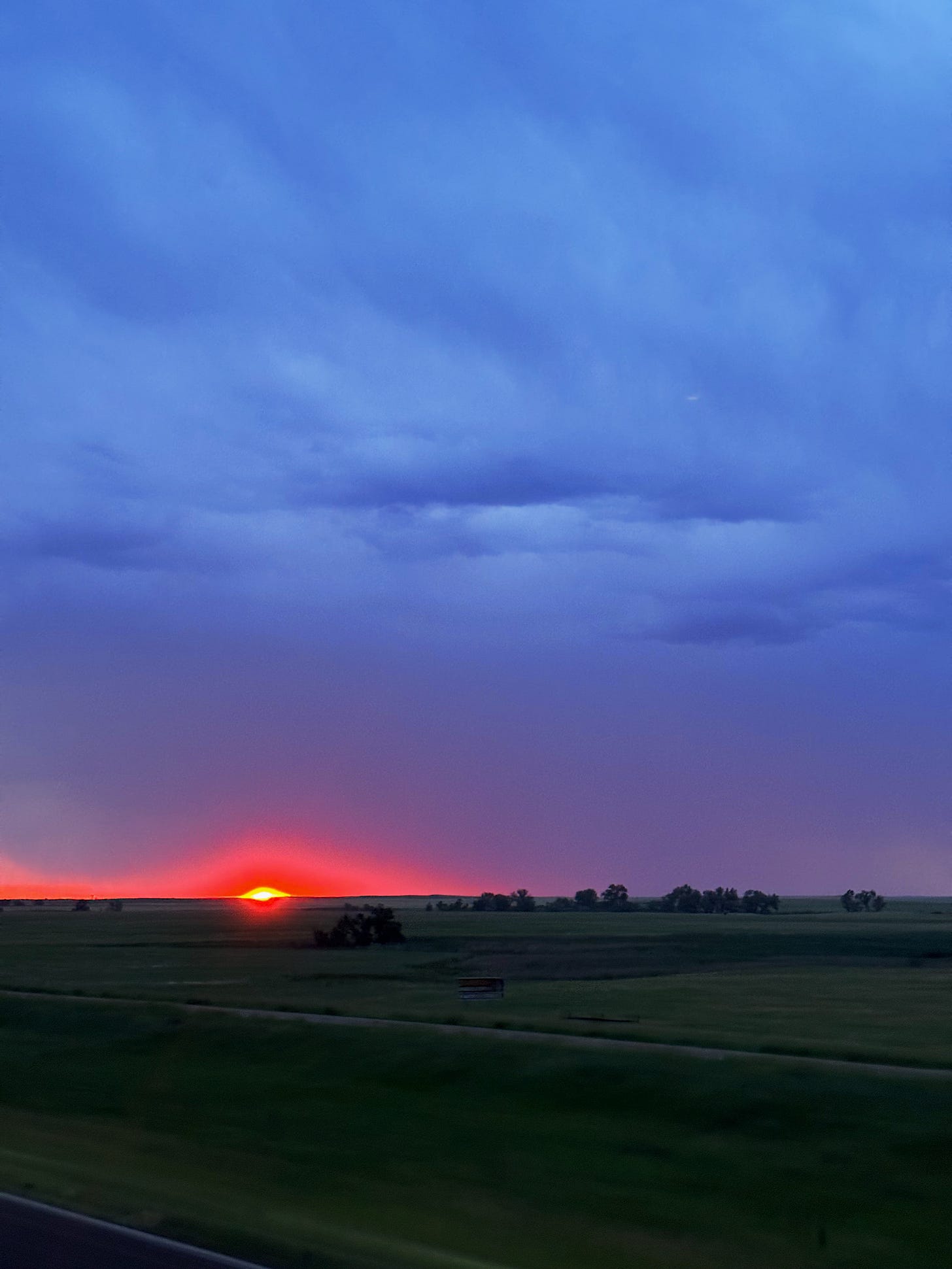
After so many days of maize, these bizarre and surprising rock formations suddenly just appear out of nowhere and make you question your sanity. These misshapen, rocky drip castles jut out of the surrounding prairie like aberations in a sea of plainness, like rebel children that are not ever going to conform. And as you drive in you realize there are more of them. And maybe it was the red light of the sunset, but we felt as if we were driving into Mars.
The next day when we woke up, the true colors came out, an ombre fading from a light sand to a mustard to a red rust and everything in between. The passage of 35 million-plus years of geological time is evident in each layer of sediment. It’s hard to imagine that this now dry and vast terrain was once the bottom of the ocean floor. Fossils of 50-foot-long prehistoric sea reptiles, known as mosasaurs, have been discovered here.
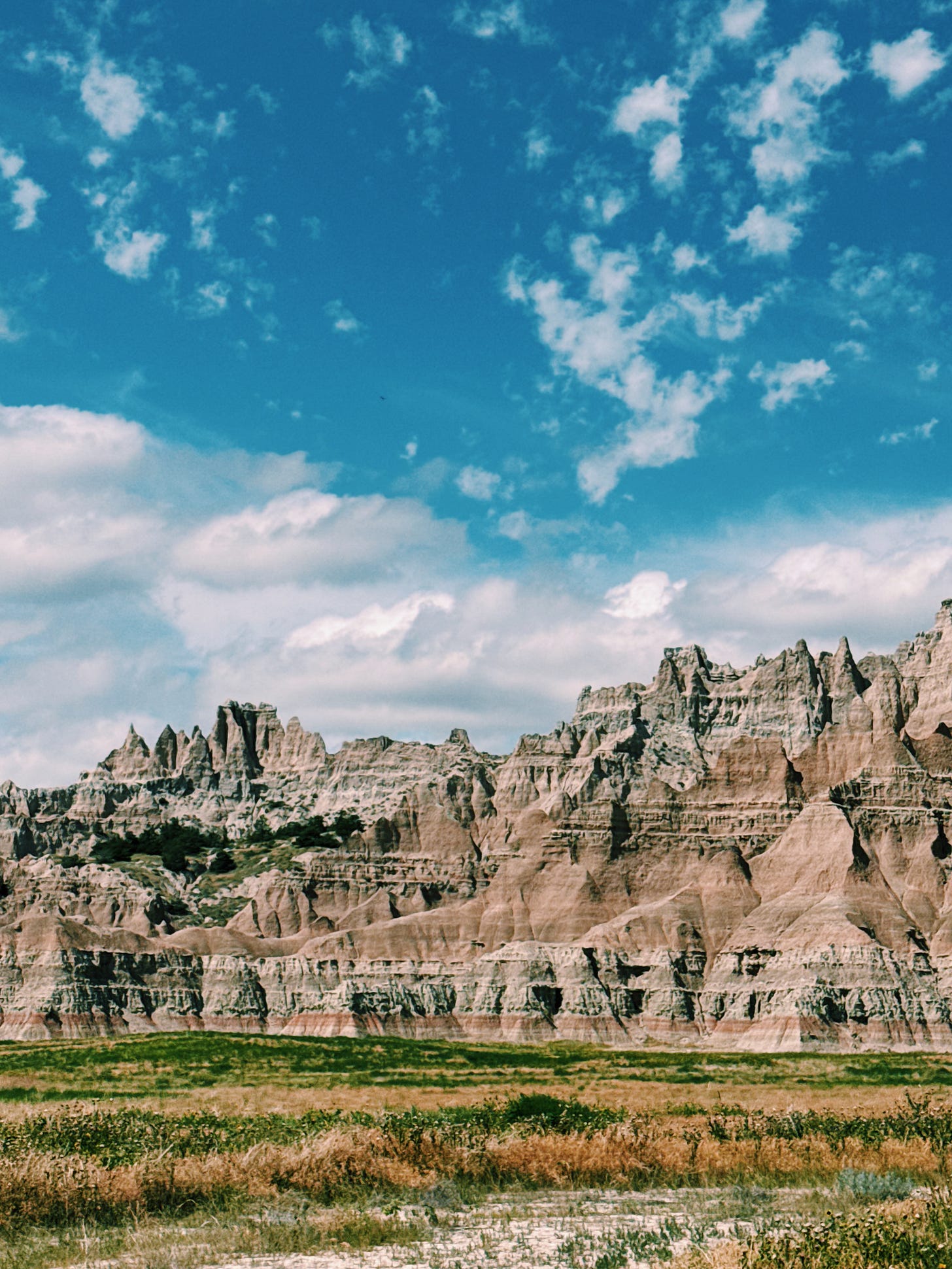
The name "Badlands” originates from the Lakota word mako sica, which literally translates to “bad lands”. They presumably gave it that name because the rugged terrain is extremely difficult to traverse and inhabit. The area features steep slopes, jagged canyons, minimal water sources, extreme temperatures, and slick, muddy conditions during rain, all of which combine to make survival very challenging. We were fortunate to secure a campsite for two nights in the Sage Creek campground within the national park, offering both power and water, making survival here easier than it used to be. We booked it a month or so in advance, hoping the dates would work out, and luckily they did.
We got to site 15 in the Agate section of the campground just before dark. That meant quickly hooking up the RV, turning our dining table into a bed for the kids, and getting everyone to bed. RV life is a daily monastic practice, especially when you're constantly on the move. The bedtime routine involves wrangling all the kids back into the Airstream. While they are inside this small space, one of us converts the family dining table into a platform that serves as the bed for all three children, while the other manages showering them one by one, as there is no bathtub. Once the bed is made, we grab our trusty quilt blanket and the pillows and make the bed as cozy as possible. We then quickly sweep and use a wet Swiffer on the floor as a final step before getting everyone ready for bed.
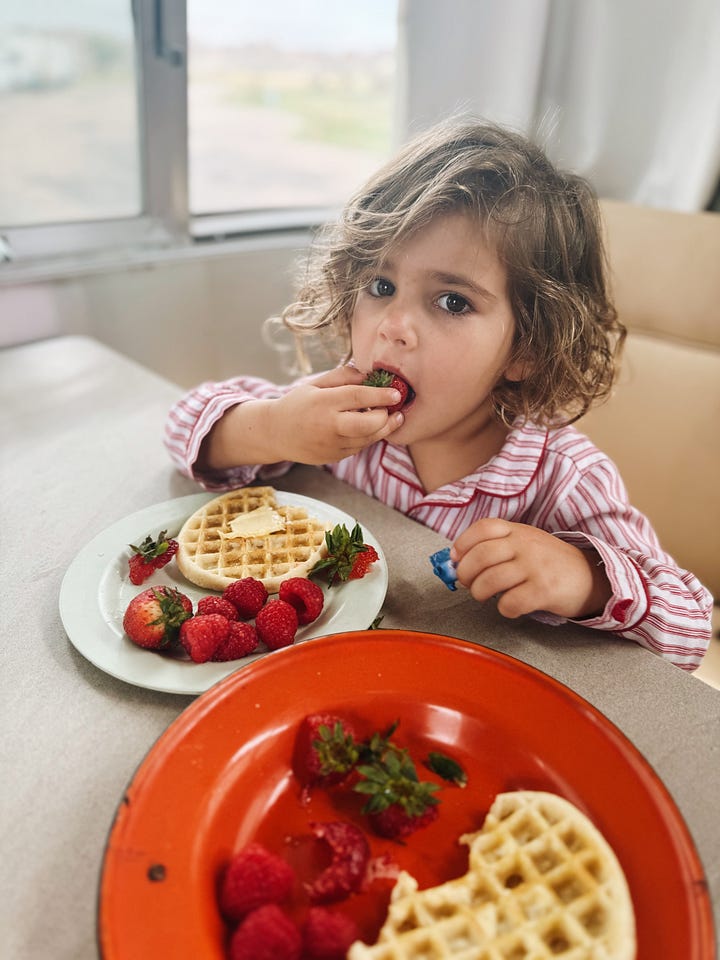
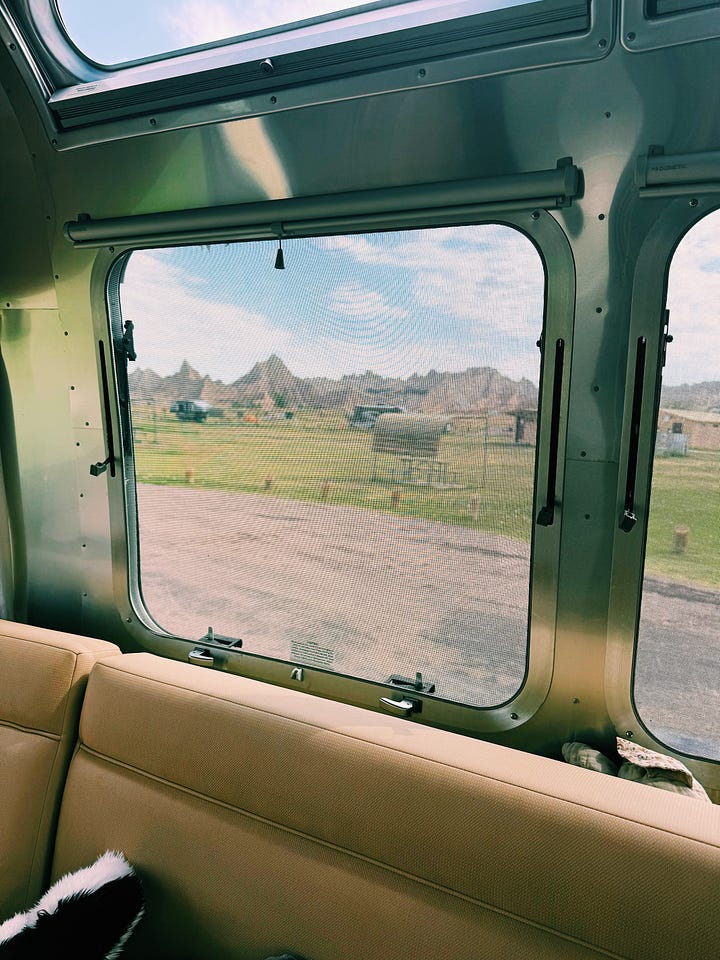
When we woke up the next morning, the temperature dropped by 40 degrees, and it was in the 50s. It was refreshing to finally open up the windows, turn off the AC, and feel a cool breeze flowing through the Tortuga. Reversing the action we had taken less than 12 hours earlier, we transformed the bed back into a table and cooked up some waffles, crispy turkey bacon and fried eggs. Then, we headed to the visitor center named after the first Lakota member of the US House of Representatives, Ben Reifel.
We went there for more information on how to see the critically endangered black footed ferrets. They are so rare that most rangers have not seen them. We learned that there was only a small population of about 125 of them in this area, which is about 1/3 of their population on Earth. The ranger said that the odds of seeing them are extremely low, and to do so, we would have to go out after dark, as they are nocturnal creatures.
This meant we had yet another night adventure in store, but more on that later. First, we had to find a way to get our children out of the Badlands gift shop filled with toys, stuffed prairie dogs, and all kinds of cool camping gear. Extracting our kids from a gift shop is a mission that requires us to turn into Navy SEAL Team 6 special forces soldiers, blocking exits, grabbing tiny toys out of tiny sweaty clutched palms, and using distraction tactics that Houdini might envy. “I’ve got the boys and we’re headed for the exits. Vivi has a prairie dog magnet in her hand and is running the wrong way. Intercept immediately. Copy, copy?”
The first hike we did was the Door Trail. As you start, you are greeted by a path of luminous wild prairie sunflowers that tower over the trail on either side. The first part of the is on a boardwalk, which then spits you out onto a wide open trail where you can invent your path out of hundreds of permutations. It’s a choose-your-own-adventure style saunter. The kids were so excited to be out of the car and free to explore this new landscape, unlike anything they had ever seen before. We were pretty nervous to see them hopping and jumping from rock to rock, with them quickly reassuring us, “We are nature boys! We were born for this!” Meanwhile, Vivi was in full kitty cat character and was very happy exploring all the nooks and crannies, constantly reminding us in her squeaky kitty voice that “this is a kitty place.”
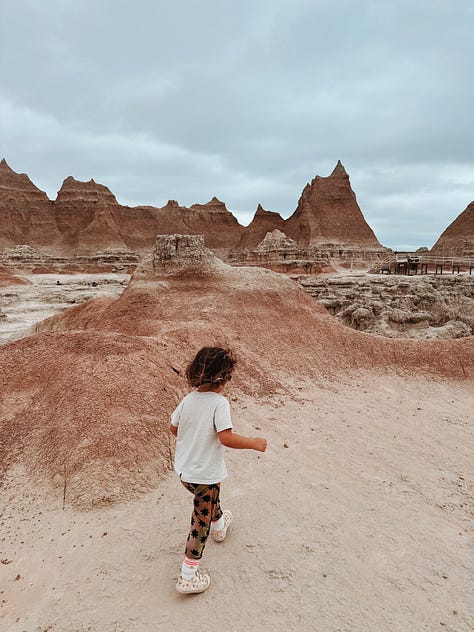
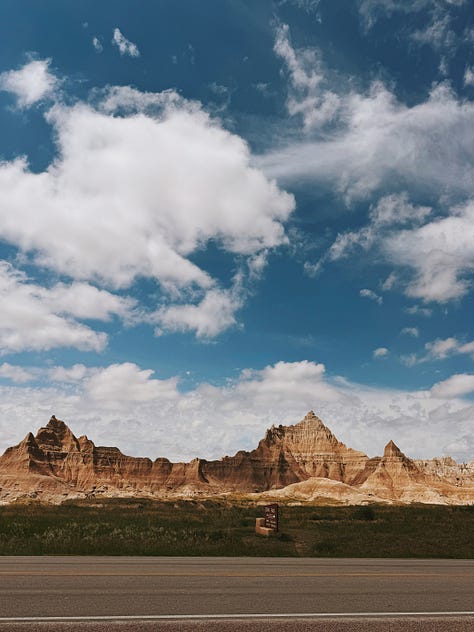
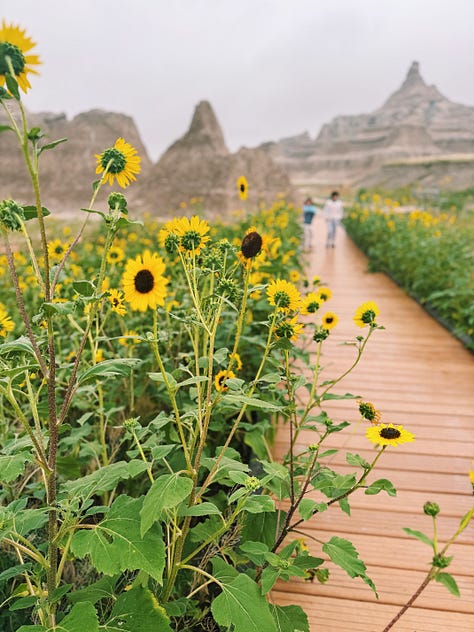
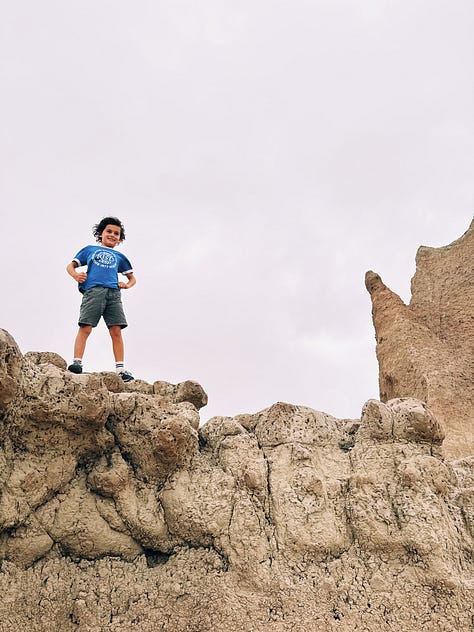
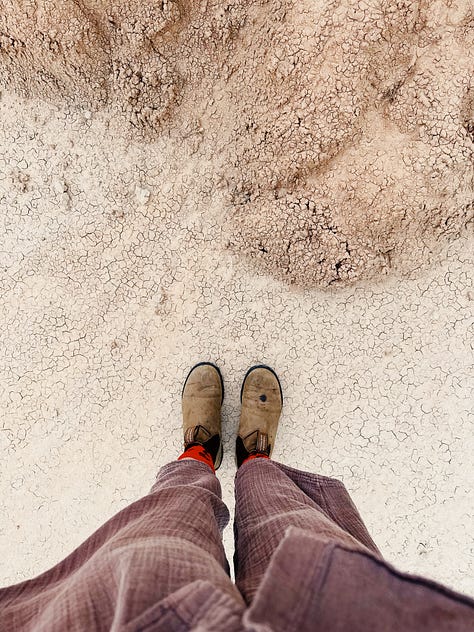
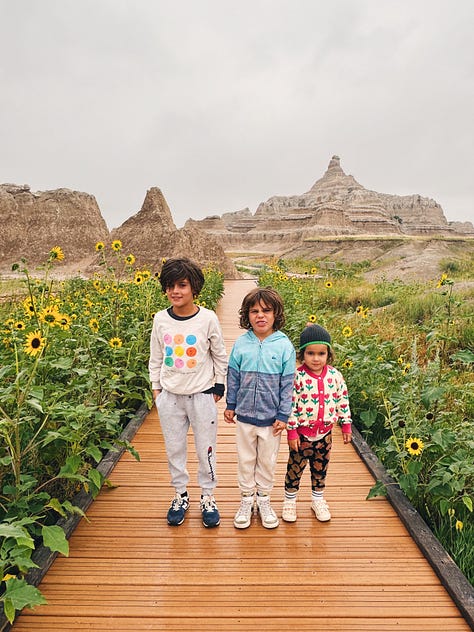
The walk was beautiful as we were now deeply immersed in the foreign-looking environment. The hike left room for creativity and open-ended play. The boys tested their (and our) boundaries while climbing up pretty high on the rocks, pretending to be big-horn sheep. The cool air and stimulating outdoor adventure made us all giddy and reinvigorated our spirits. After about 2 hours on the trail, we headed back to camp for spaghetti and hot showers, before going in search of the black footed ferrets.
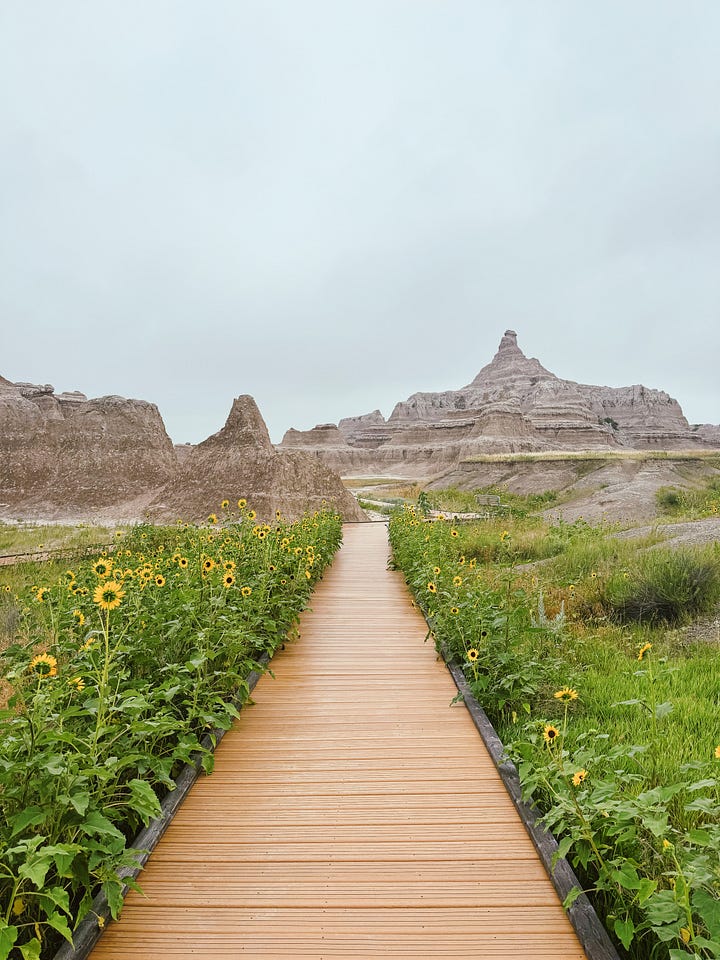
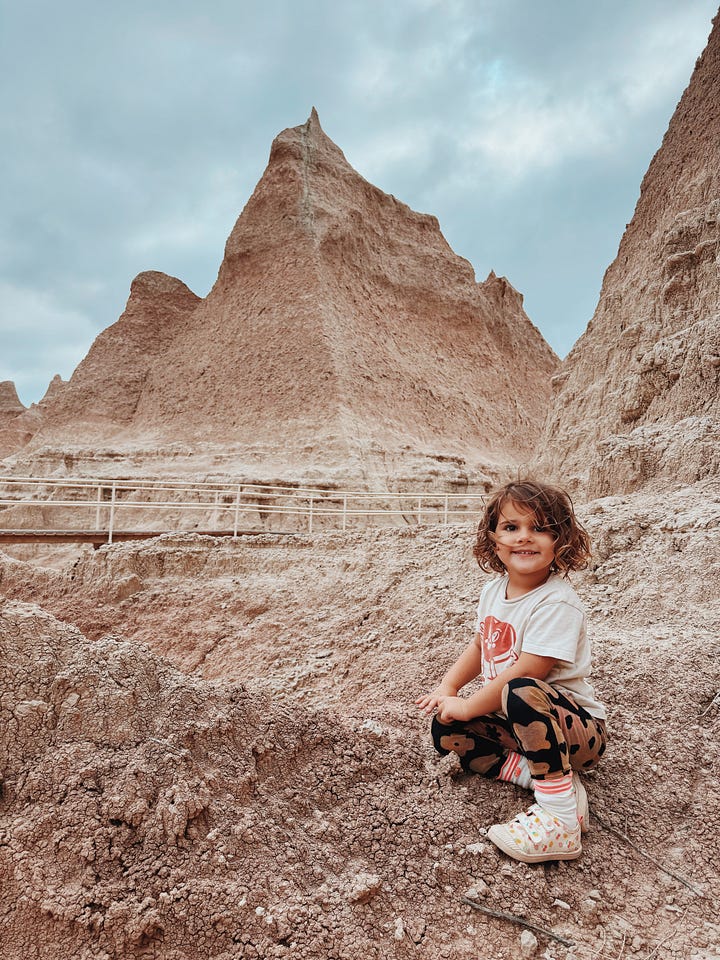




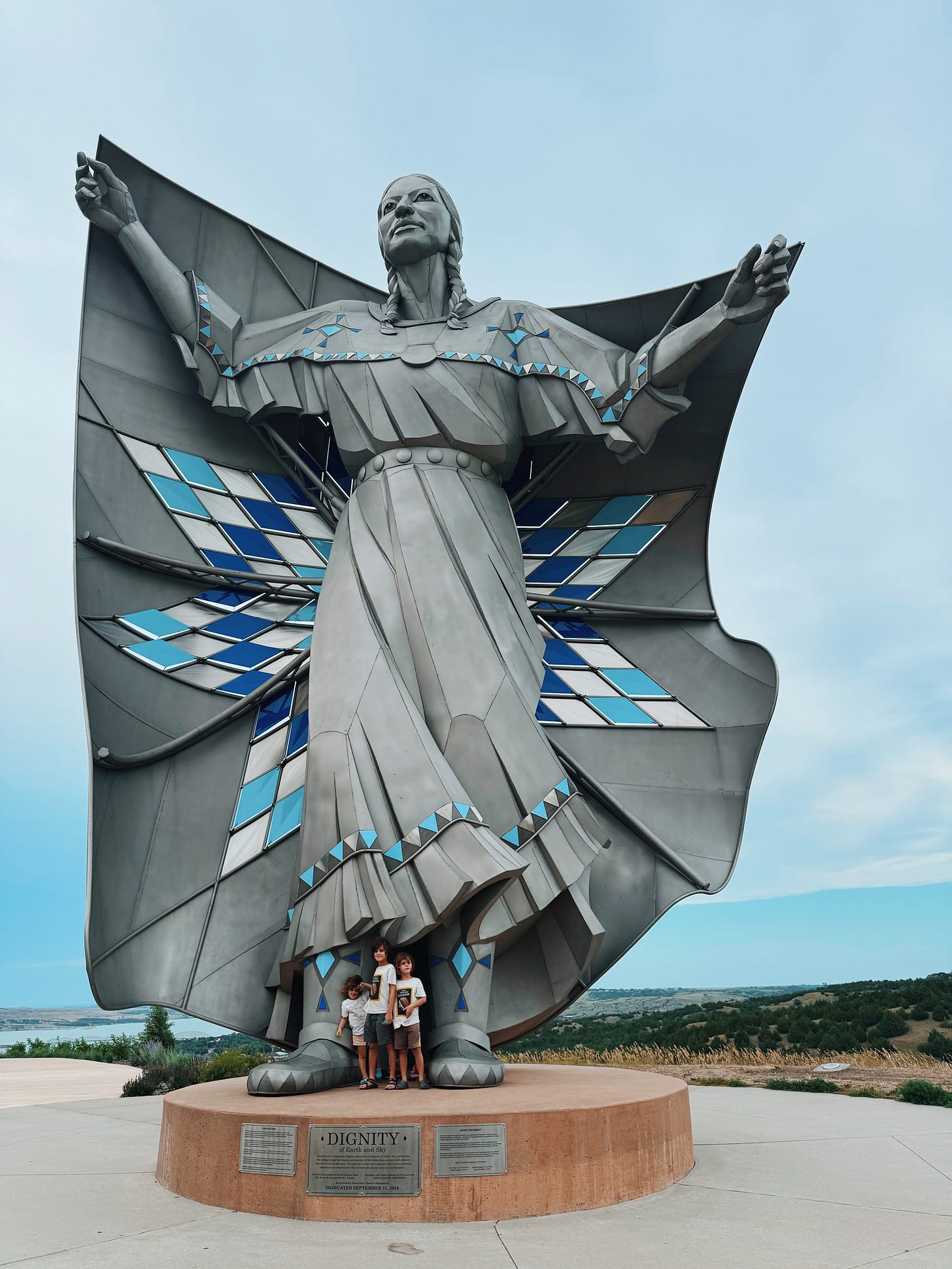
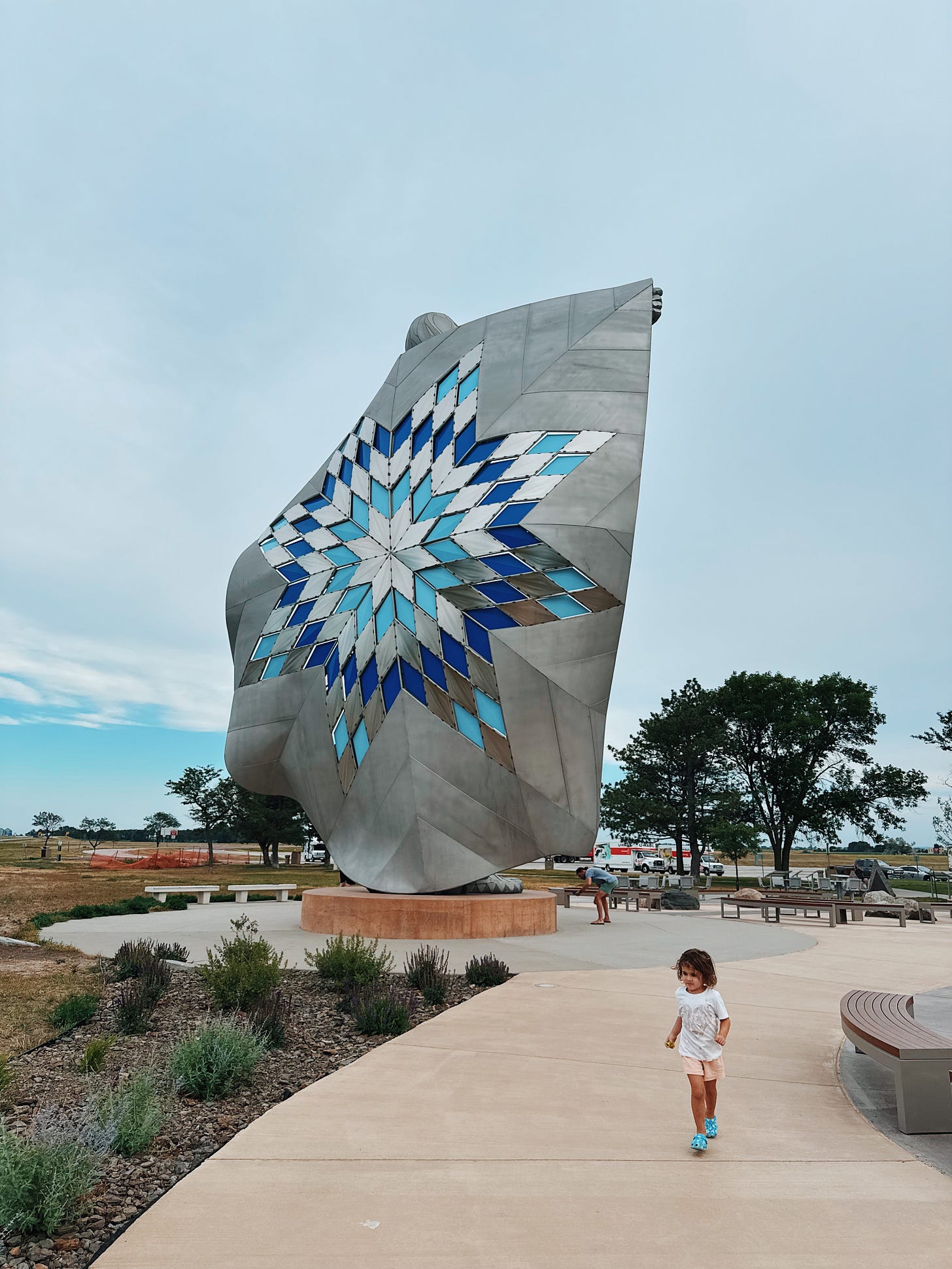
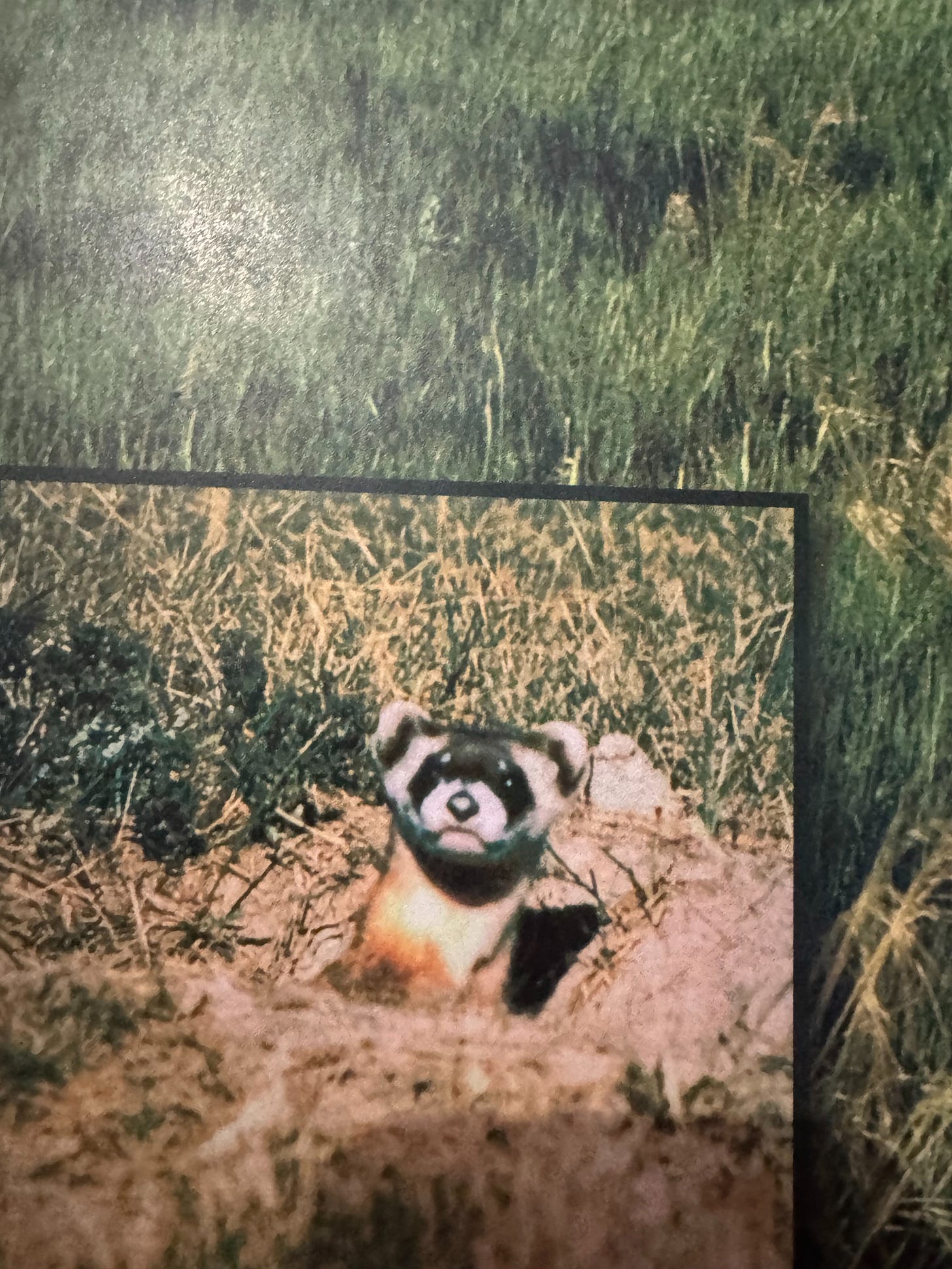
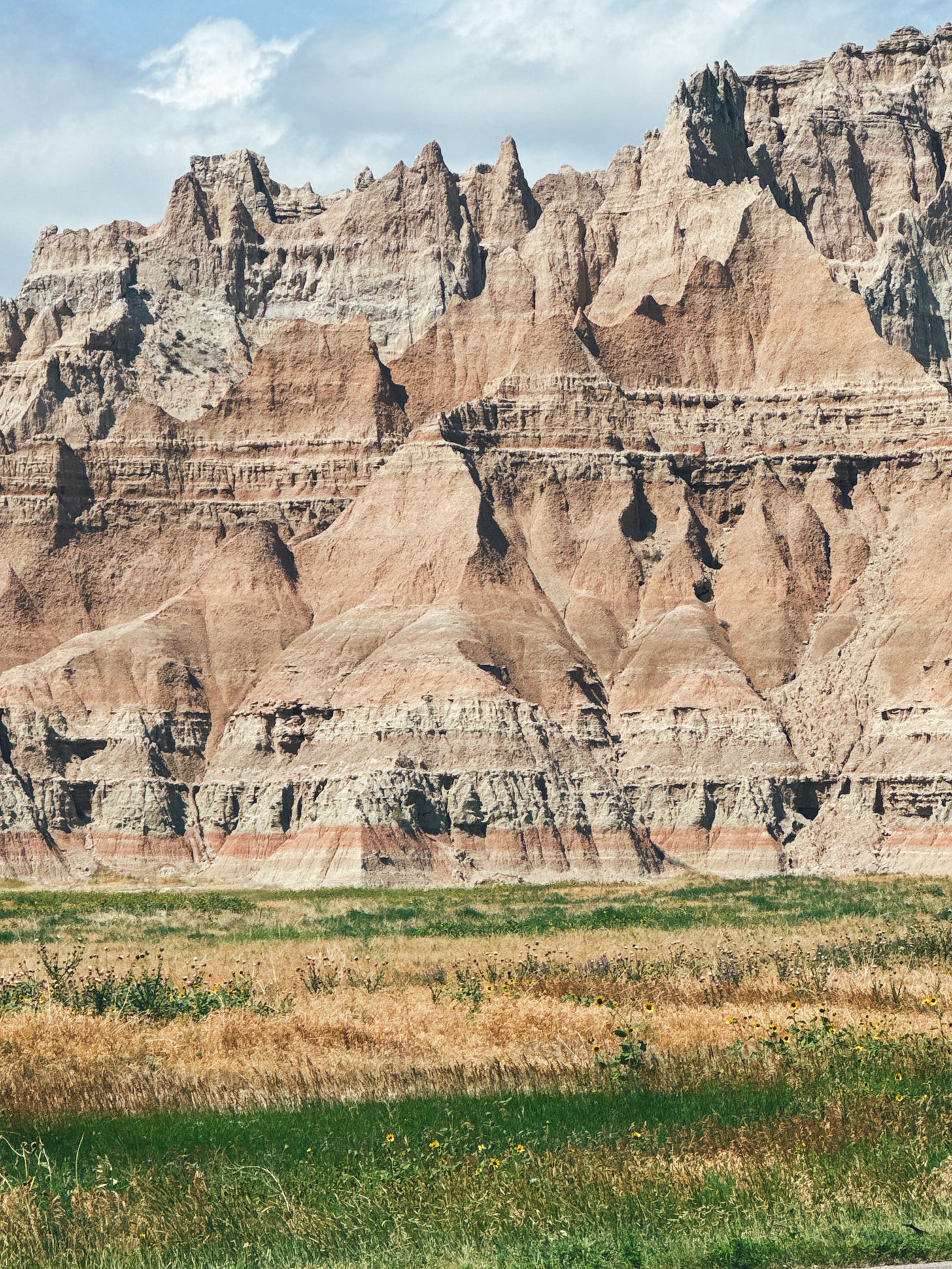
Thanks Johnny!
Just amazing! Not only are you giving to your kids these wonderful educational gifts of (relatively) unknown American treasures, but also to those of us following your stories. Thank you, keep safe!